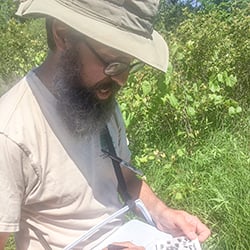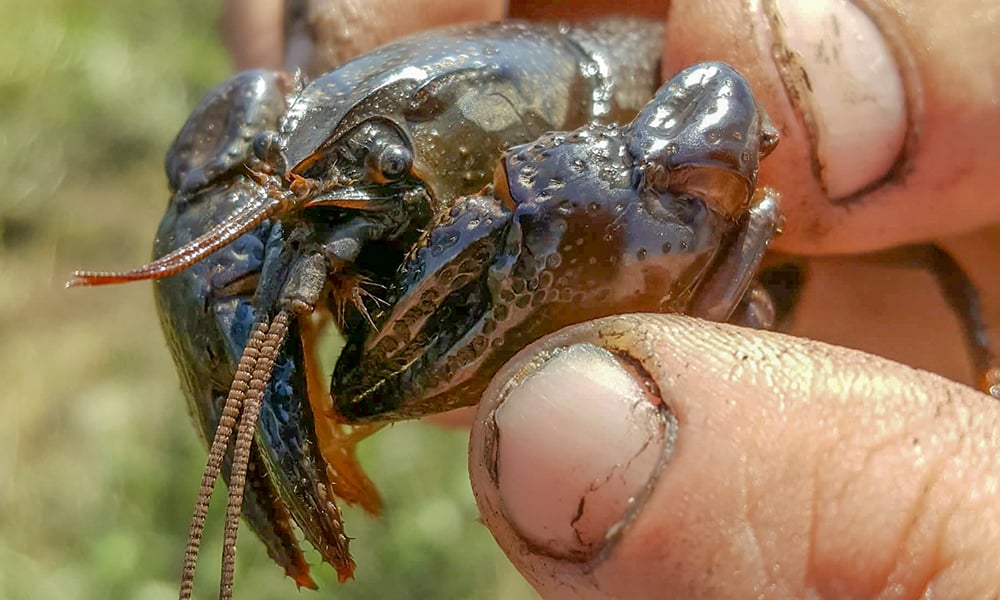
Whenever we tell stories about nature, they can be very interesting but can get quite complex when you look at how many of the pieces are interconnected. This is what happens when we tell the story of the federally endangered Hine’s Emerald dragonfly, its habitat, and ways we’ve tried to create more habitat for them in DuPage forest preserves. As you’ll see, the story is at times interesting, complex, tragic, and exciting.
In 2007, the U.S. Fish and Wildlife Service started a project to create habitat for the federally endangered Hine’s Emerald dragonfly in partnership with various Forest Preserve Districts in the Chicago region. The Forest Preserve Districts were involved with the project because they either had existing Hine’s emerald breeding habitat on their property or were close to a proposed tollway project to build a bridge over the Des Plaines River. This project required the Illinois Toll Highway Authority to fund an effort to provide additional nearby habitat for the dragonfly. The funding also included a research component to assess how well the project worked.

A federally endangered Hine's Emerald dragonfly
A group of biologists, regulators, and contractors called the Hine’s Emerald Dragonfly Working Group was formed to help guide decisions on where to put this newly constructed habitat, and the Forest Preserve District of DuPage County’s nearby Waterfall Glen Forest Preserve in Darien was chosen for one of the locations. Between 2008 and 2014, more than $800,000 worth of ecological restoration work was done at Waterfall Glen, including building new streamlet systems for the dragonflies. The work was completed in 2010, and native vegetation planted during the project began establishing itself in the area. When the streamlet systems became fairly well established, researchers tried to determine how well they supported the dragonfly.
Hine’s Emerald dragonflies have a close relationship with the burrowing devil crayfish (Cambarus diogenes), as they both prefer the same habitat. The devil crayfish develops complex burrow systems approximately 4 – 6 feet deep and usually connected to groundwater. Over time, researchers determined that not only can the dragonfly use the same habitat as the crayfish, the dragonfly larvae can also live inside the crayfish burrows and use them as suitable home sites.
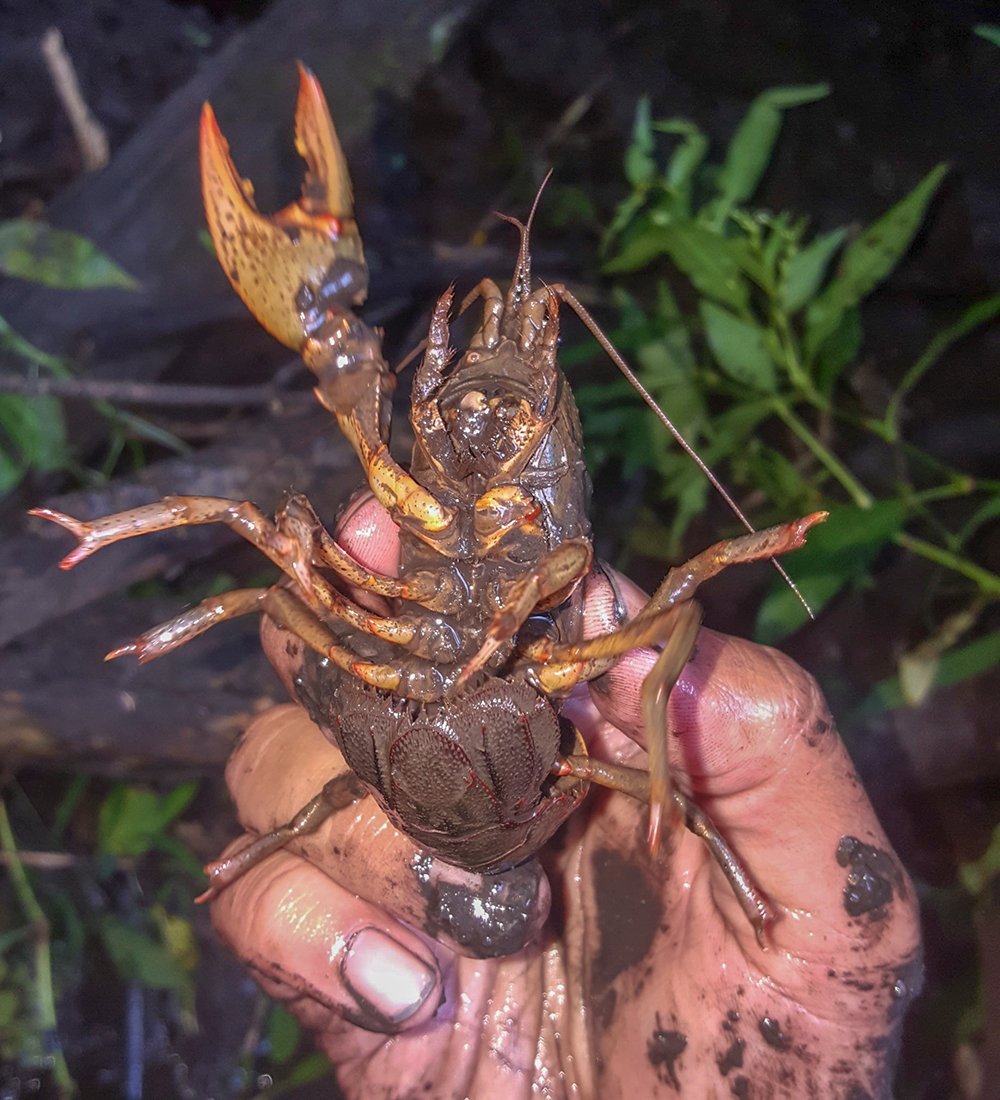
A burrowing Devil Crayfish at Waterfall Glen Forest Preserve in Darien.
In order to assess the success of the project, the devil crayfish was used as somewhat of a surrogate to see how well the dragonfly would do in the same habitat. Researchers have determined that the number of crayfish burrows in the created habitats were very low compared to wild habitats. They originally thought the crayfish would naturally colonize the site since the species exists plentifully in adjacent habitats, but this wasn’t the case. As a result, the Illinois Department of Natural Resources gave the Forest Preserve District additional grant money to explore why this was happening and provide potential solutions.
With the grant money, the Forest Preserve District has hired expert Hine’s Emerald dragonfly biologists to determine why the crayfish wasn’t naturally occupying the created habitat and explore the feasibility of raising the crayfish in captivity for release into the streamlet systems and other potentially productive habitats for the dragonfly. In addition, the District continues to work with researchers to raise Hine’s Emerald dragonflies in captivity at its Urban Stream Research Center to help supplement the local population.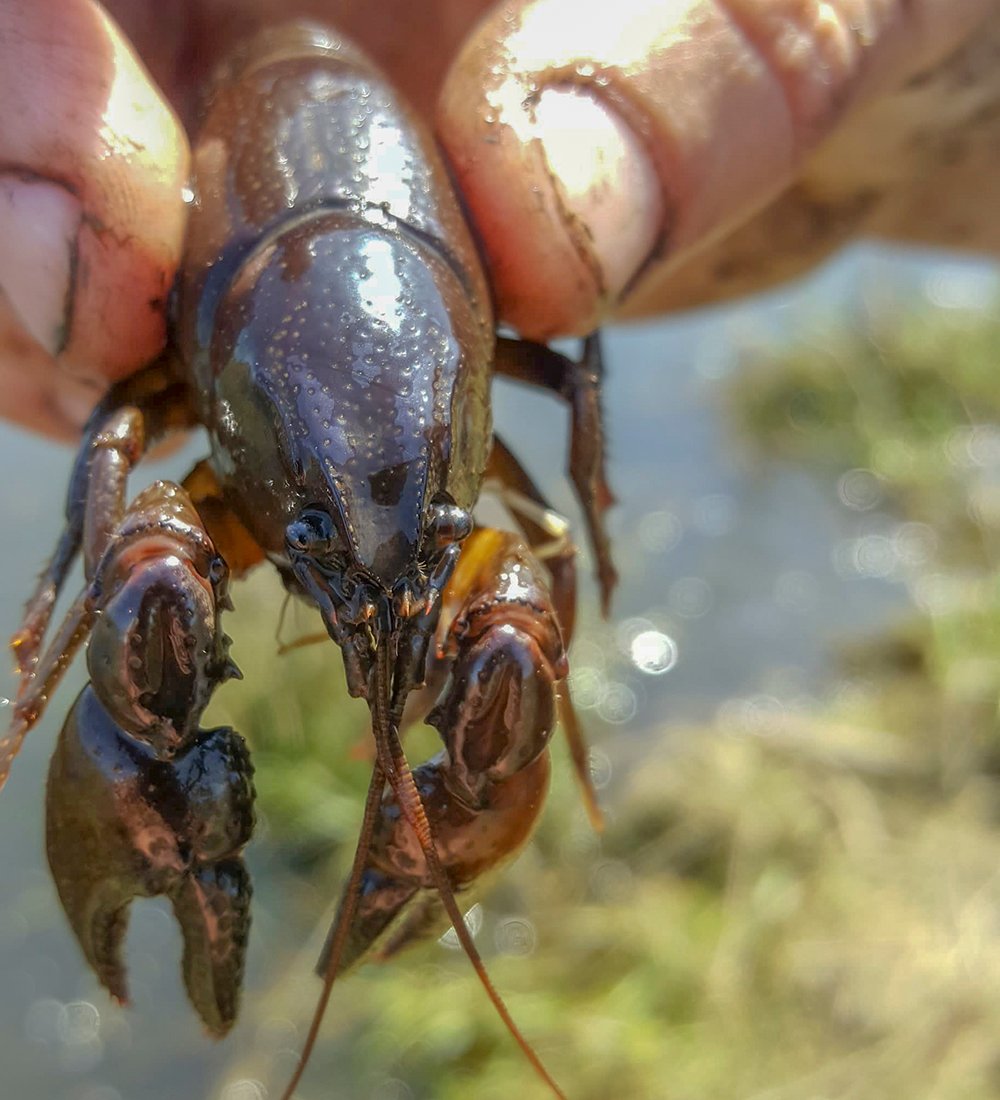
One of the great things about working with devil crayfish is that there are so many unanswered questions about its relationship with Hine’s Emerald dragonfly. How does the dragonfly avoid predation while inside the crayfish burrow? If we release a crayfish at a particular site, will it stay there? What type of habitat does the crayfish need in order to continue to provide burrows for the dragonfly to use? These questions and other similar questions certainly show how complex nature can actually be. It is an illustration that reminds us to appreciate the complexities of nature even though we may not understand them right now.
More on the Hine's Emerald dragonfly: Helping the Hine's Emerald Dragonfly
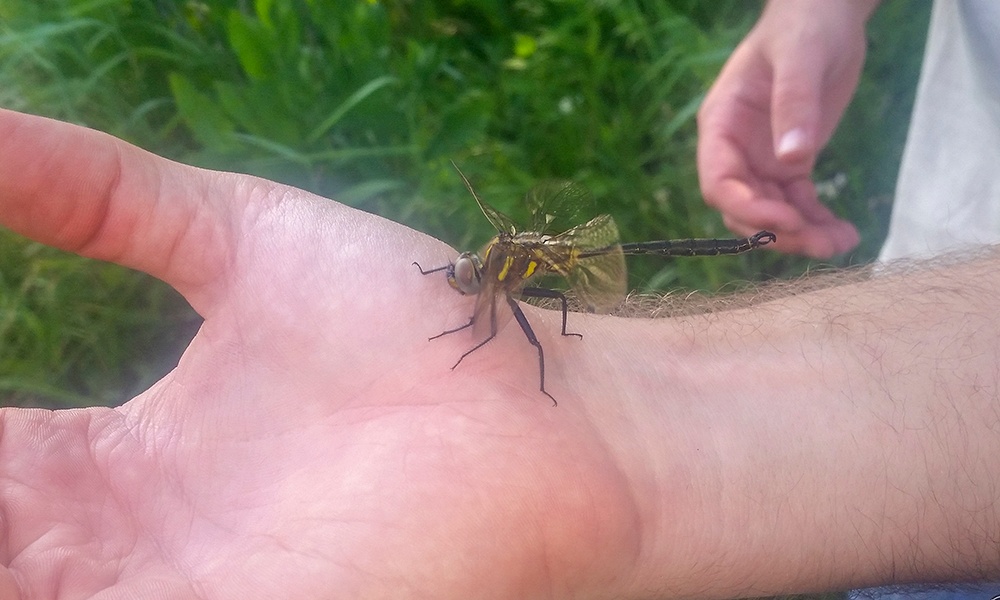
Hine's Emerald dragonfly
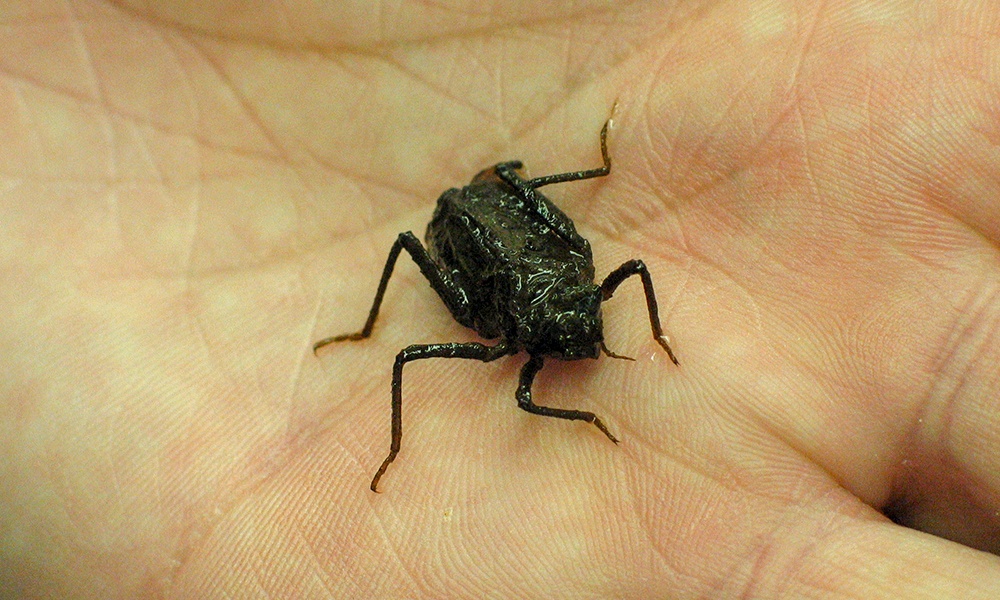
Hine's emerald dragonfly larva
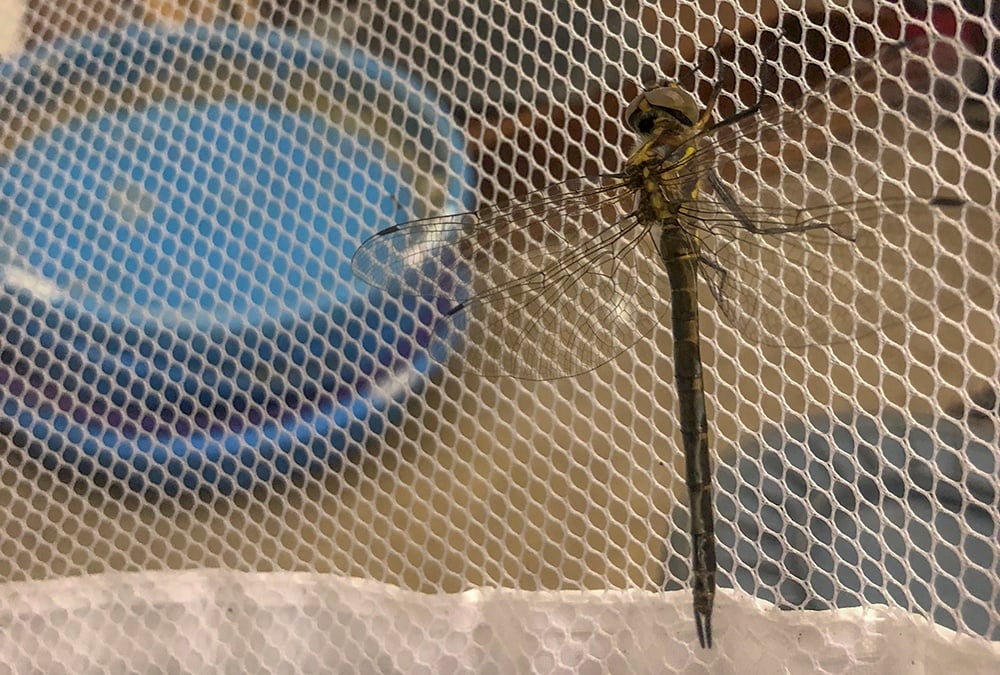
Tom Velat
